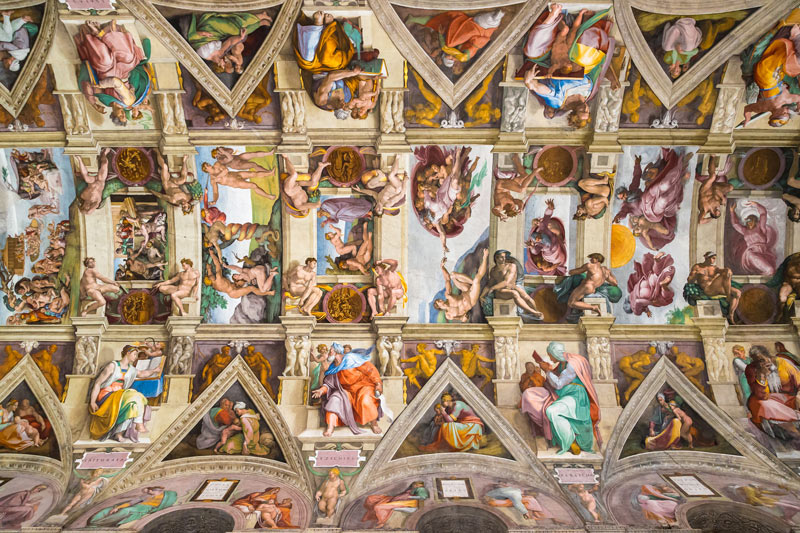A True Yunatic
Michelangelo didn’t just sculpt statues – he released souls from stone. Born in Florence, raised by chisel and storm, he was the kind of artist who saw angels in blocks of marble and didn’t rest until he set them free. He lived big, worked obsessively, raged like a thundercloud and still somehow carved beauty so perfect it hurts.
He wasn’t a team player. He didn’t do cute. He wrestled with God, paint and popes and came out with the Sistine Chapel on his back like a divine tattoo. He didn’t fit in the Renaissance – he made the Renaissance expand to fit him.
The Inner Child
His inner child? Oh, it never left – it just grew stronger, louder and covered in marble dust. Michelangelo sculpted like a kid building a universe out of clay and thunder. He had tantrums. He had vision. He made bodies bigger than life and holier than saints, because part of him never stopped being awed by the human form. The child in him still believed art could change the world – and then he proved it.
Tribbles
Let’s talk celestial-level tribbles. These are not works. These are earthquakes in stone and paint:
- David – Not just a statue, but a 17-foot cosmic flex of courage, tension and pure Renaissance muscle.
- The Pietà – Tenderness and tragedy carved so delicately it makes stone look like breath.
- The Sistine Chapel Ceiling – 4 years of lying on his back painting creation, chaos and God’s fingertip almost touching ours.
- The Last Judgment – His final mic drop on the altar wall. The divine, the damned and everything in between – all naked, all human.
Every Tribble is a confrontation with eternity.
“Every block of stone has a statue inside it and it is the task of the sculptor to discover it.” – Michelangelo Buonarroti

Connected with the Yuniverse
Michelangelo didn’t observe the universe – he demanded a conversation with it. He believed that the divine was hidden in the human body, that beauty was a kind of truth and that the cosmos left clues in muscle, gesture and stone. He wasn’t painting religion – he was painting the tension between gods and mortals, between soul and skin. He saw the universe as unfinished and himself as its stubborn, passionate sculptor.
Spiritual
Michelangelo’s spirituality was a battle: between flesh and spirit, between devotion and desire. He wrestled with God, with himself and with the weight of creation. His prayers were carved, not whispered.
Michelangelo wasn’t just an artist – he was a cosmic stonemason, proving that the divine lives in the details – and sometimes, you have to chip away at the world to reveal it.
“I am still learning.” – Michelangelo Buonarroti (Spoken at age 87)